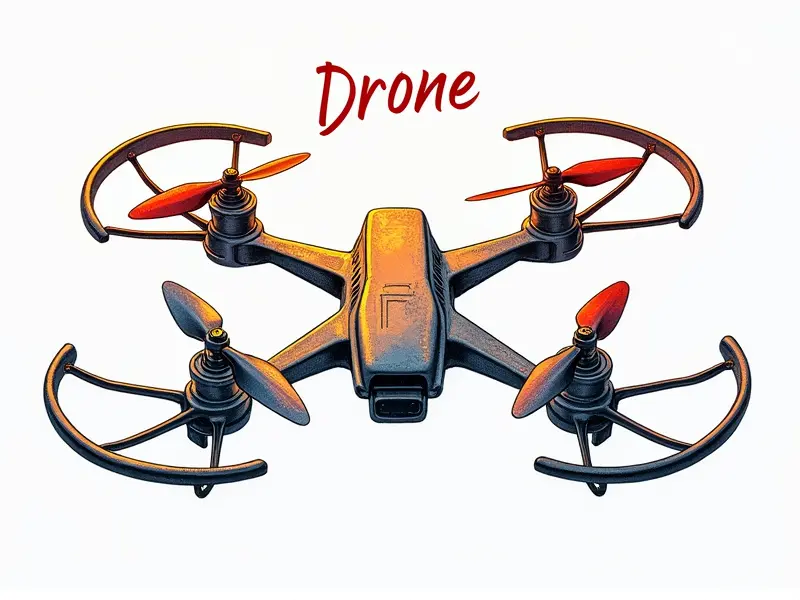Safe flying practices tips

Stay Legal: RC Flying Regulations Overview
Before you take to the skies with your remote-controlled (RC) aircraft, it's crucial to understand and adhere to local regulations. In many countries, such as the United States, the Federal Aviation Administration (FAA) regulates model aircraft operations under Part 107 of the Federal Aviation Regulations. This includes requirements for registration, airspace restrictions, and operational limitations.
Other regions may have their own specific rules. For instance, in Canada, Transport Canada sets guidelines that RC pilots must follow to ensure safe flying practices. Similarly, the Civil Aviation Authority (CAA) in the UK oversees model aircraft operations under its Air Navigation Order 2016.
Top 5 Safety Tips for RC Pilots
- Wear Protective Gear: Always wear a helmet and goggles to protect your eyes from debris and potential accidents. Additionally, consider wearing gloves to maintain grip on the controls during high-speed maneuvers.
- Check Your Equipment: Before each flight, inspect your RC aircraft for any signs of damage or malfunction. Ensure that all components are securely fastened and functioning properly.
- Know Your Limits: Start with simple maneuvers until you feel comfortable before attempting more advanced techniques. This helps prevent accidents caused by overconfidence.
- Avoid Crowded Areas: Choose open spaces away from people, buildings, and other aircraft to minimize the risk of collisions or property damage.
- Practice Emergency Landings: Learn how to perform controlled landings in case of battery failure or signal loss. This can prevent serious injury or damage to your equipment.
Essential Flying Rules for Beginners
For new pilots, mastering the basics is key to a safe and enjoyable flying experience:
- Familiarize Yourself with Controls: Understand how each control input affects your aircraft's movement. Practice basic maneuvers like takeoff, landing, and turns.
- Start Slowly: Begin by flying in calm conditions to get a feel for the controls without worrying about wind or other variables.
- Learn from Experienced Pilots: Seek guidance from more experienced RC enthusiasts who can offer valuable advice and tips based on their own experiences.
- Use Training Aids: Consider using training aids like simulators to practice flying techniques before taking your aircraft out in the field.
Avoiding Common RC Flying Mistakes
Mistakes are inevitable, but learning from them can help you improve your skills and avoid future incidents. Here are some common errors to watch out for:
- Overconfidence: Don't underestimate the complexity of flying an RC aircraft. Always approach each flight with caution.
- Lack of Pre-Flight Inspection: Skipping this crucial step can lead to unexpected issues mid-flight, such as loose screws or damaged propellers.
- Inadequate Battery Management: Ensure your batteries are fully charged and monitor their condition during flights. Low battery levels can cause sudden drops in performance.
Weather Conditions & Safe Flying Practices
The weather plays a significant role in determining whether it's safe to fly your RC aircraft. Here’s what you need to know:
- Wind Speed and Direction: Strong winds can make flying challenging, especially for beginners. Pay attention to wind direction and speed before taking off.
- Rain or Snow: Flying in wet conditions increases the risk of electrical malfunctions and reduces visibility. Wait until weather improves before venturing out.
- Temperature Extremes: Extreme heat or cold can affect battery performance and overall aircraft stability. Optimal flying temperatures are typically between 10°C to 30°C (50°F to 86°F).
How to Choose the Right Flying Location
Selecting an appropriate location is crucial for safe RC flying:
- Avoid Populated Areas: Stay away from parks, playgrounds, and other places where people gather.
- Look for Open Spaces: Fields, large parking lots, or designated model aircraft clubs are ideal locations with plenty of room to maneuver.
- Check Local Regulations: Ensure that the chosen location complies with local laws and regulations regarding RC flying.
Emergency Protocols for RC Pilots
In case of an emergency, it’s important to know what actions to take:
- Battery Failure: If your aircraft loses power mid-flight, attempt a controlled landing in the nearest safe area.
- Sudden Signal Loss: In the event of signal loss, try switching frequencies or moving closer to regain control. Otherwise, prepare for an emergency landing.
FPV Racing: Safe Flying Techniques
Flying in first-person view (FPV) requires additional safety measures due to reduced visibility:
- Use a Buddy Box System: This allows another pilot to take control if you lose orientation or signal.
- Practice Ground Control: Before taking off, practice controlling the aircraft from the ground using FPV goggles to ensure smooth transitions into flight.
RC Helicopter Safety Tips for Beginners
Flying RC helicopters presents unique challenges. Here are some tips to get started safely:
- Master Basic Maneuvers: Focus on learning how to hover, take off, and land before attempting more complex maneuvers.
- Use a Trainer Helicopter: These models come with built-in stability features that make them easier for beginners to handle.
Beginner's Guide to RC Airplane Safety
RC airplanes require careful handling, especially during takeoff and landing. Here are some key safety tips:
- Choose the Right Plane: Start with a simple trainer model designed for beginners.
- Practice Takeoffs and Landings: These are critical phases where most accidents occur, so practice them extensively under controlled conditions.
Maintaining Your RC Craft Safely
To keep your RC aircraft in top condition, follow these maintenance tips:
- Regular Inspections: Check for wear and tear on a regular basis. Replace any damaged or worn-out parts immediately.
- Battery Care: Store batteries properly to maintain their performance. Charge them according to the manufacturer's guidelines.
Conclusion
Safely flying RC aircraft involves adhering to legal regulations, practicing good safety habits, and being mindful of environmental conditions. By following these tips and continuously learning from your experiences, you can enjoy a rewarding hobby while minimizing risks. Remember, the key to safe and enjoyable RC flying lies in preparation, awareness, and respect for both yourself and others.

